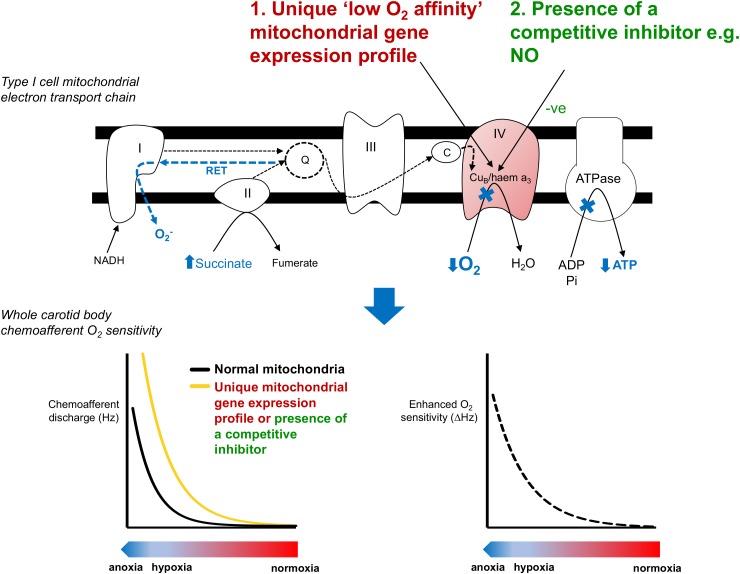FIGURE 2.
Potential mechanisms underlying the unique low O2 affinity mitochondria in the carotid body. Inhibition of mitochondrial function in the carotid body type I cell occurs at PO2 values well above those that inhibit metabolism in other O2 insensitive cells. This activates a number of proposed signaling pathways (shown in blue). The unique low O2 affinity of the carotid body mitochondria could be due to (1) a unique mitochondrial gene expression profile or (2) the presence of a competitive inhibitor such as NO (Holmes et al., 2016). The impact of lower mitochondrial O2 affinity is to cause a right-shift in the PO2-chemoafferent response curve, thereby enhancing the functional O2 sensitivity and allowing the carotid body to respond over a more physiological range of arterial PO2s. RET, reverse electron transport.

